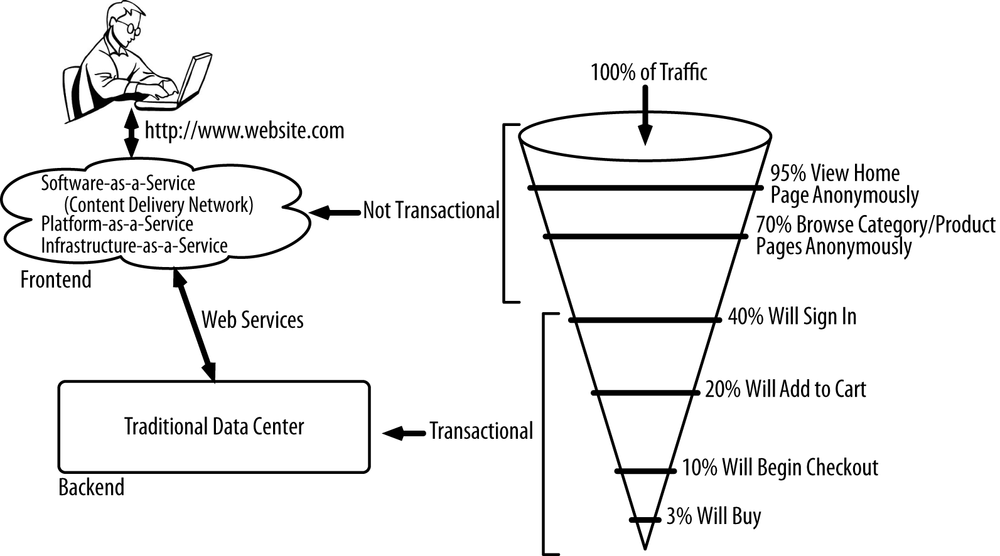Chapter 11. Hybrid Cloud
Though ecommerce applications have traditionally been viewed as monolithic with the frontends (e.g., HTML, CSS, JavaScript) being inseparably combined with backends (e.g., code containing business logic connected to a database), it doesn’t have to be this way. In today’s omnichannel world, the approach of having the two inseparably combined no longer makes sense technically or strategically.
If you split your frontend from your backend, most page views can be served from your frontend without the backend ever being touched. Only when you transact—add to cart, check out, update profile, and so forth—do you actually have to touch your backend. In this model, your backend substantially shrinks and remains under your firm control while your frontend can elastically soak up most of the page views in a public cloud. DNS ultimately resolves to your frontend, with your frontend then calling your backend when necessary, as shown in Figure 11-1.

This is exactly how most other channels work today, with the exception of the Web. Thick client applications like those found on kiosks or smartphones already interact with your backend in this way. It’s time for the Web to catch up to this model.
In addition to strategic reasons, there are practical reasons the ...
Get eCommerce in the Cloud now with the O’Reilly learning platform.
O’Reilly members experience books, live events, courses curated by job role, and more from O’Reilly and nearly 200 top publishers.

